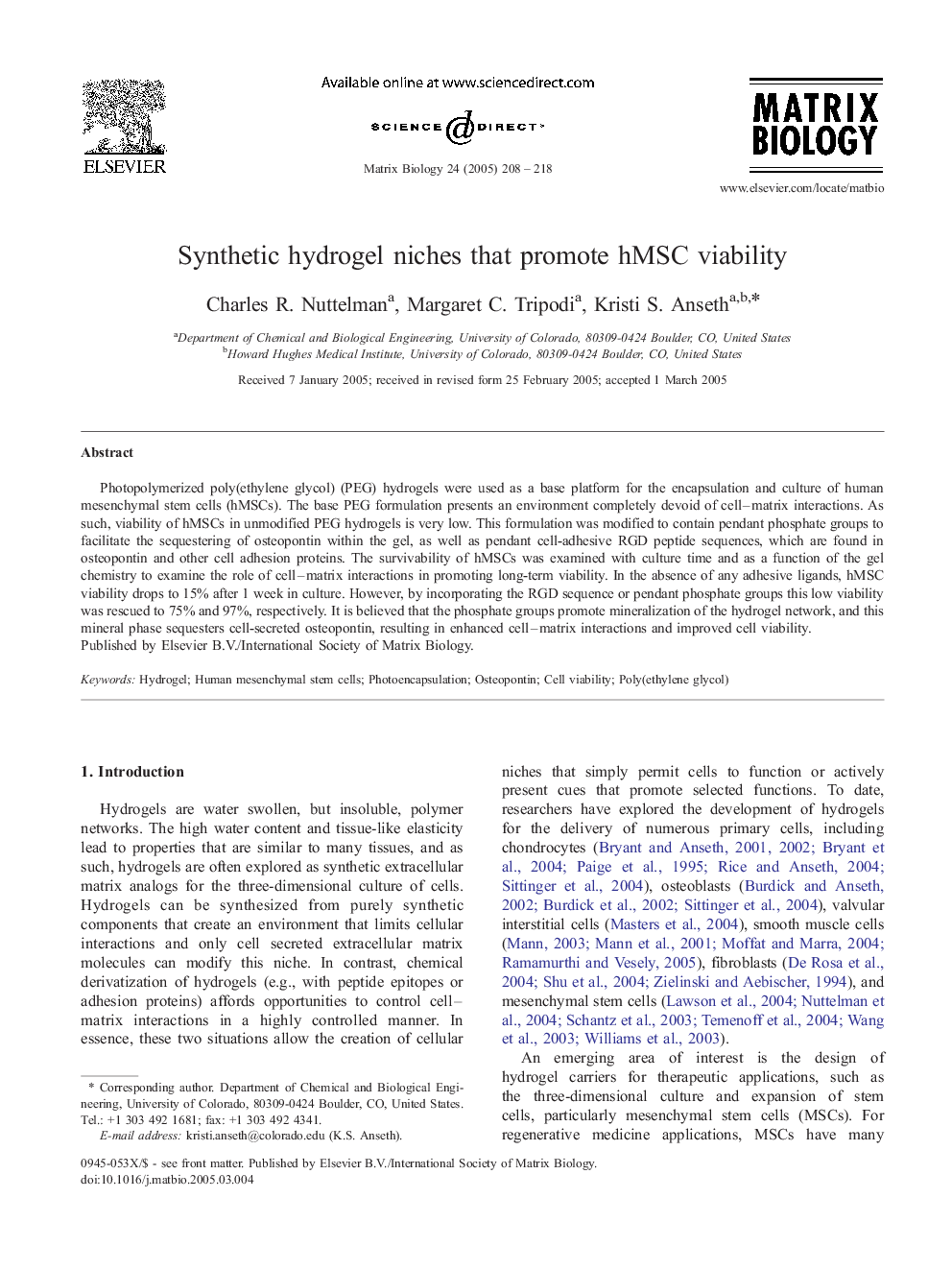| کد مقاله | کد نشریه | سال انتشار | مقاله انگلیسی | نسخه تمام متن |
|---|---|---|---|---|
| 10913953 | 1088678 | 2005 | 11 صفحه PDF | دانلود رایگان |
عنوان انگلیسی مقاله ISI
Synthetic hydrogel niches that promote hMSC viability
دانلود مقاله + سفارش ترجمه
دانلود مقاله ISI انگلیسی
رایگان برای ایرانیان
کلمات کلیدی
موضوعات مرتبط
علوم زیستی و بیوفناوری
بیوشیمی، ژنتیک و زیست شناسی مولکولی
تحقیقات سرطان
پیش نمایش صفحه اول مقاله

چکیده انگلیسی
Photopolymerized poly(ethylene glycol) (PEG) hydrogels were used as a base platform for the encapsulation and culture of human mesenchymal stem cells (hMSCs). The base PEG formulation presents an environment completely devoid of cell-matrix interactions. As such, viability of hMSCs in unmodified PEG hydrogels is very low. This formulation was modified to contain pendant phosphate groups to facilitate the sequestering of osteopontin within the gel, as well as pendant cell-adhesive RGD peptide sequences, which are found in osteopontin and other cell adhesion proteins. The survivability of hMSCs was examined with culture time and as a function of the gel chemistry to examine the role of cell-matrix interactions in promoting long-term viability. In the absence of any adhesive ligands, hMSC viability drops to 15% after 1 week in culture. However, by incorporating the RGD sequence or pendant phosphate groups this low viability was rescued to 75% and 97%, respectively. It is believed that the phosphate groups promote mineralization of the hydrogel network, and this mineral phase sequesters cell-secreted osteopontin, resulting in enhanced cell-matrix interactions and improved cell viability.
ناشر
Database: Elsevier - ScienceDirect (ساینس دایرکت)
Journal: Matrix Biology - Volume 24, Issue 3, May 2005, Pages 208-218
Journal: Matrix Biology - Volume 24, Issue 3, May 2005, Pages 208-218
نویسندگان
Charles R. Nuttelman, Margaret C. Tripodi, Kristi S. Anseth,